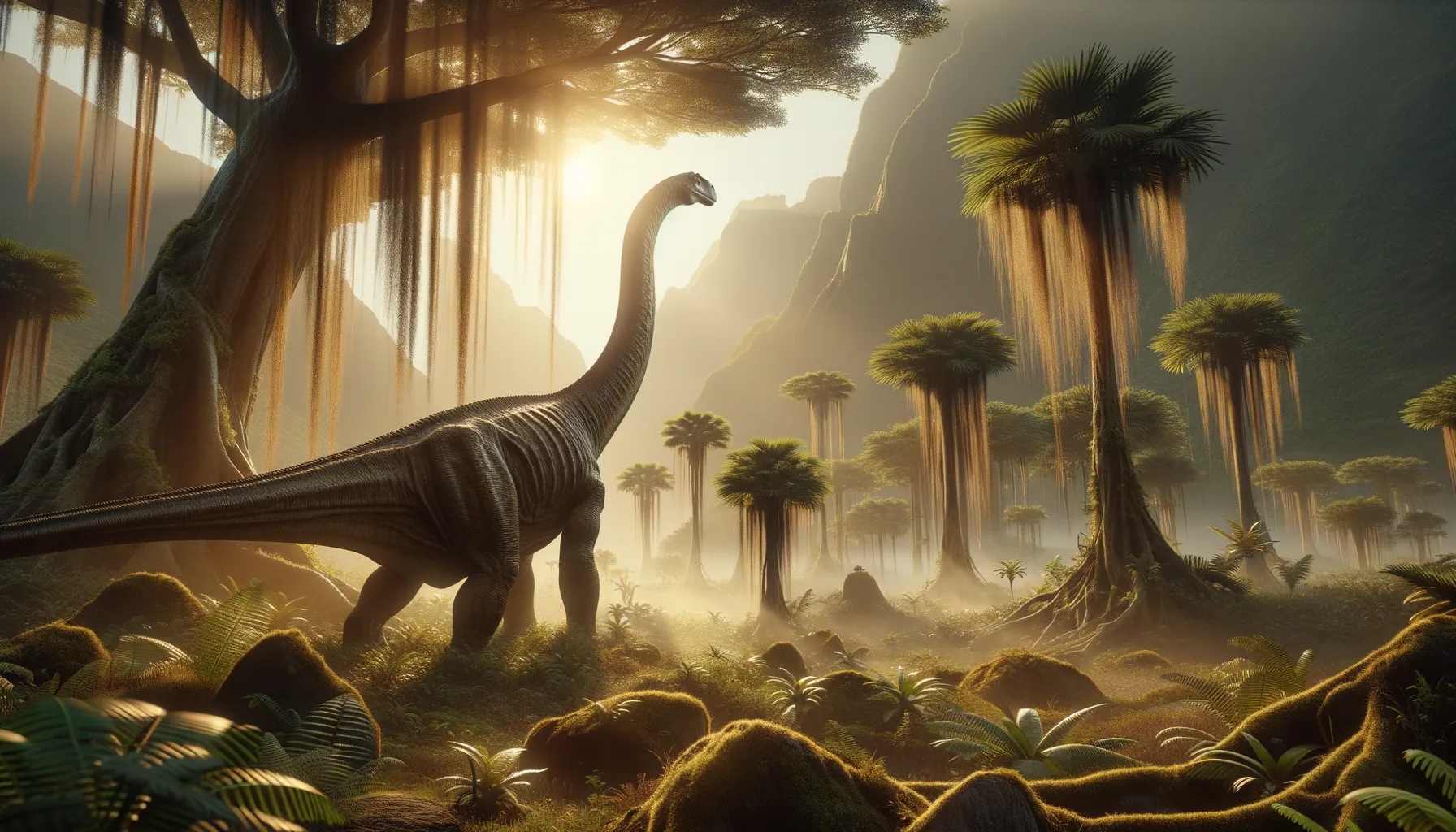
Pachyspondylus
Giant herbivore of the Jurassic.
Period
Jurassic
Length
Around 40 feet long.
Height
Approximately 15 feet tall.
Weight
Roughly around 5 tons.
Pachyspondylus was a long-necked herbivorous dinosaur that roamed the Earth during the Jurassic period. It belonged to the sauropod group, characterized by massive, tree trunk-like legs and elongated necks to reach high vegetation. Discovered in the 19th century in South Africa, it provides significant insights into the diversity of early sauropods and their role in their ecosystems as primary consumers of flora.
Diet
Pachyspondylus was an herbivore, primarily feeding on leaves, ferns, and other vegetation found in its terrestrial environment. Its long neck allowed it to browse higher up in the trees, accessing food sources that were out of reach for many other herbivorous dinosaurs.
Hunting
Although Pachyspondylus did not hunt, its feeding behavior was crucial for maintaining the plant life balance within its habitat. It likely traveled in groups, ensuring safety in numbers from potential predators.
Environmental challenges
During its time, Pachyspondylus faced challenges such as fluctuating climate conditions and competition for food resources with other large herbivores. Predation by larger carnivorous dinosaurs also posed a significant threat. It needed to adapt to periods of drought or disease that could affect the availability of plant life, crucial to its survival.
Speed
Likely slow-moving due to its bulk.
Lifespan
Estimated at several decades, like other sauropods.
First discovery
First fossils found in South Africa in the late 19th century.
Fun Facts
- Pachyspondylus was a dinosaur from the Triassic period, which means it lived more than 200 million years ago.
- This dinosaur was relatively small compared to other known dinosaurs, approximately the size of a large dog.
- Pachyspondylus is classified as a prosauropod, which are early relatives of the giant sauropod dinosaurs.
- Fossils of Pachyspondylus have been discovered in South Africa, offering clues about its habitat and lifestyle.
- Its name 'Pachyspondylus' means 'thick vertebrae' in Greek, referring to its robust spine.
- Pachyspondylus was likely herbivorous, feeding on plants and vegetation of its time.
- As a bipedal walker, Pachyspondylus probably moved and foraged on two legs most of the time.
Growth and Development
Pachyspondylus grew rapidly during its early years to avoid predation, reaching its massive size as a defense mechanism. Their development may have involved migrating in herds to more favorable climates to find abundant food and ideal conditions for growth. Over the years, they developed long necks and tails, characteristic of their group.
Habitat
Pachyspondylus resided in semi-arid regions with access to plentiful vegetation, which was necessary to maintain its large size. Their habitat included open woodlands and some forested areas where they could easily find food. Seasonal migrations might have been a necessity for finding fresh feeding grounds and suitable climates throughout the year.
Interaction with other species
Pachyspondylus interacted with other herbivorous dinosaurs, often competing for the same food sources. It coexisted with various carnivorous species, which sometimes preyed upon the young or weaker individuals. Cooperative behaviors such as moving in herds might have been a strategy against these predators.
Natural lifespan
Pachyspondylus likely lived for several decades.
Reproduction
Pachyspondylus reproduced by laying eggs, which it likely buried or left in nests in soft, secure ground. Parental care after hatching might have included protecting the young from predators. Large clutches could ensure the survival of some offspring despite high juvenile mortality rates.
Social behaviour
Pachyspondylus likely engaged in group behaviors, forming herds for collective defense and social interaction. Herd life offered protection against predators for individual members, particularly the young. This herd dynamic could extend to communal nesting sites, where many individuals collectively raised their young.
Fossil locations
Fossils of Pachyspondylus have primarily been uncovered in South Africa, offering insight into its range during the Jurassic period. The South African sites have yielded several important specimens, helping scientists understand its physical structure and ecological role. The discovery of its fossils in these locations has provided valuable data on the paleoenvironment it inhabited.
